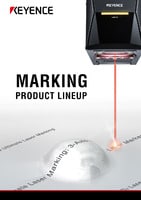Laser Marking Systems / Laser Markers
The Basics of Laser Welding: How It Works and Why It’s Widely Recognised
-
Tags:
- Metal , Automotive , Medical
The use of laser welding has increased steadily over recent years. This is a result of its impressive benefits, like improved performance or efficiency and reduced costs. In the following, we will provide you with information regarding the basics of laser welding and why so many organisations and industries are utilising it alongside laser marking and engraving.
Fundamentals of Laser Technology and Its Role in Welding
Laser welding is a type of fusion welding. It uses its small beam and deep penetration to rapidly melt and join materials together without excessive distortion. There are ranges of oscillation modes and laser beam outputs that make laser welding essential for manufacturers because of the versatility with materials.
We’re here to provide you with more details.
Reach out today!

Comparing Laser Welding to Traditional Welding Techniques
Laser welding is classified as a fusion welding technique, with its direct competitor in the category being arc welding. Arc welding is a common welding technique that uses arc discharge and is sometimes done by using robot hands instead of a human. But, laser welding always uses automation for welding, making it inherently more efficient.
Moreover, arc welding is only capable of welding thick or medium-thick materials. On the other hand, lasers can weld a range of materials from thin to thick, materials that are dissimilar, and detailed parts.
Discover more about this product.
Click here to book your demo.

Streamlining Industrial Processes: How Laser Welding is Transforming Manufacturing and Construction
Welding processes either rely on humans or robots, which are slow and vulnerable to problems. With the precision needed for welding, laser welding beats out its competitors and streamlines the industrial process. Laser welding works on its own, is precise in nature, and can weld a range of materials through shapes and sizes.
Laser welding offers significant advantages in terms of efficiency and the cost savings it can provide. As an example, the concentrated heat generated by the laser beam allows for faster welding speeds, reducing overall production time and increasing production. The precision of laser welding minimises the need for additional processes after the work is completed, such as grinding or polishing, saving additional time and resources.
This process can even eliminate the need for physical contact between the welding tool and materials. This plays a key role in reducing the risk of damage or contamination. This is important in industries such as medical device manufacturing, where delicate components and strict cleanliness standards are required. By streamlining the welding process and reducing manual labour, laser welding will continue to help manufacturers and the construction industry in the years to come.
Curious about our pricing?
Click here to find out more.

Advanced Techniques in Laser Welding for High-Precision Manufacturing
Laser Welding of Dissimilar Materials: Challenges and Solutions
One of the reasons why laser welding is sought after is because of its ability to weld dissimilar materials. In particular, fibre lasers use high energy density for achieving the welding of dissimilar materials.
Nevertheless, welding does have a significant amount of challenges. Defects like pits, undercut, overlap, insufficient reinforcement, bead meandering, surface cracking, and remaining groove are all possible if welding is not done correctly.
Fortunately, there is laser technology to solve that problem. At KEYENCE, we make laser sensors that measure and inspect the surface and inside of welds. For example, use the LJ-X8000 Series High-speed 2D/3D Laser Scanner to evaluate the shape of the bead. The 2D inspection finds defective weld beads, while the 3D shape inspection finds minute surface defects. Adding a laser sensor to your welding is simple, as it easily connects to the laser welding machine. Even more, the laser sensor can be used at the same time as laser welding. When used at the same time, the sensor measures the grove shape and feeds it back to control in real time. This technology improves a laser’s capability to weld without defects.
Applications of High-Precision Laser Welding in Industries Like Medical Device Manufacturing and Electronics
Medical devices and electronics manufacturing are two productions that use thin materials and require precise assembly. As the demand continues to grow for these applications, the use of high-precision laser welding will greatly increase.
Semiconductor laser welding is used for intricate materials that are welded together and create a semiconductor. Circuit boards and batteries are other commonly welded electronic components. Medical device laser welding is used for putting together products and devices that are extremely small in size and follow strict compliance guidelines. This includes surgical instruments, prosthetic devices, and implants.
As you see, there are numerous use cases for laser welding, making it widely recognised as a viable and superior solution for certain applications.
We’re here to provide you with more details.
Reach out today!





